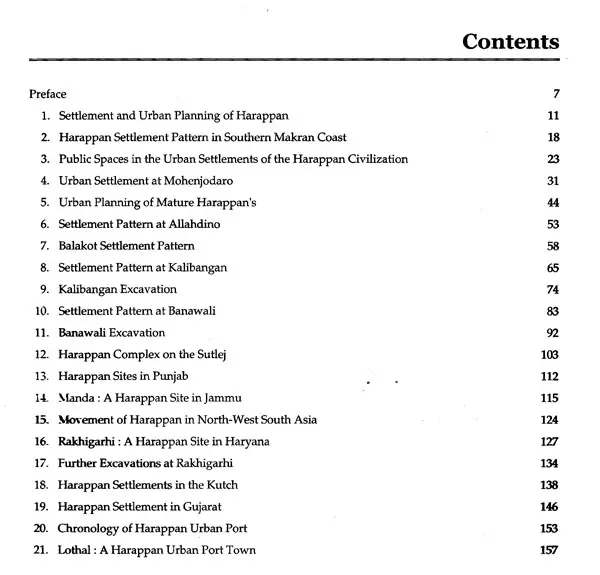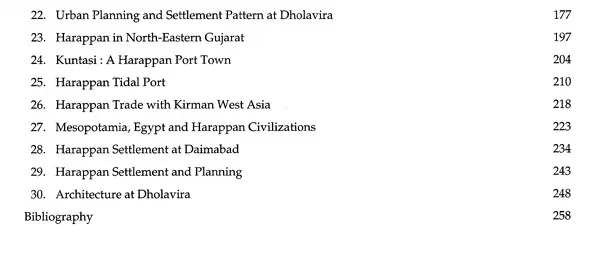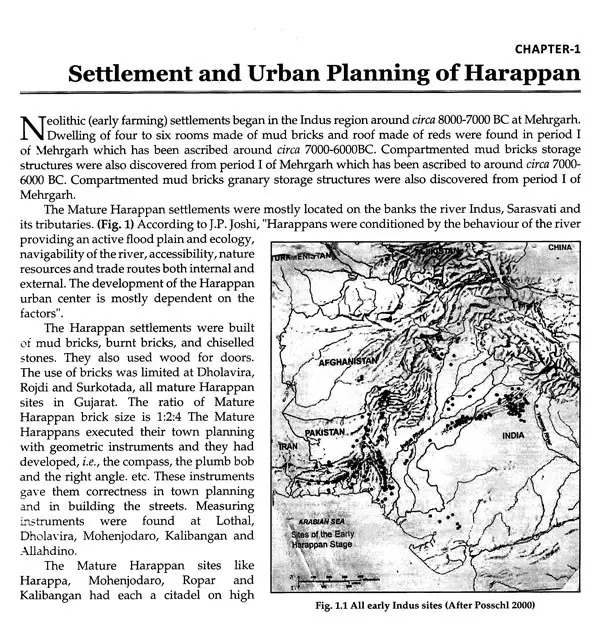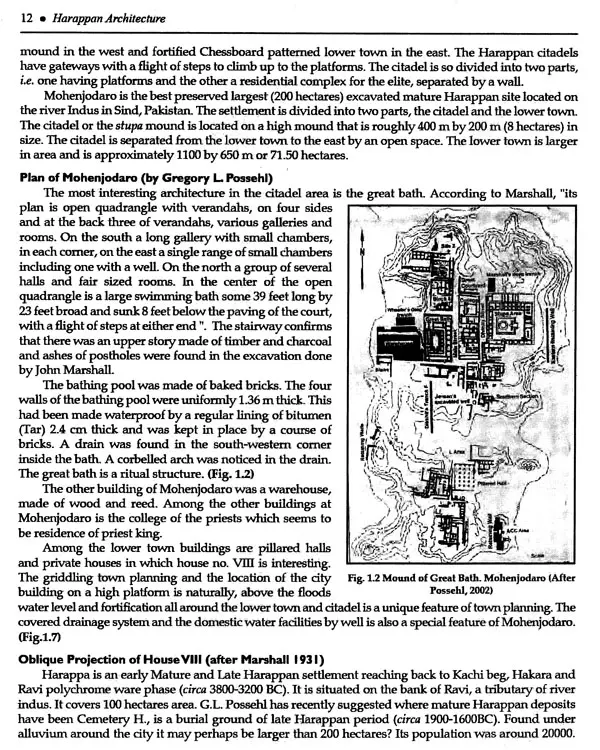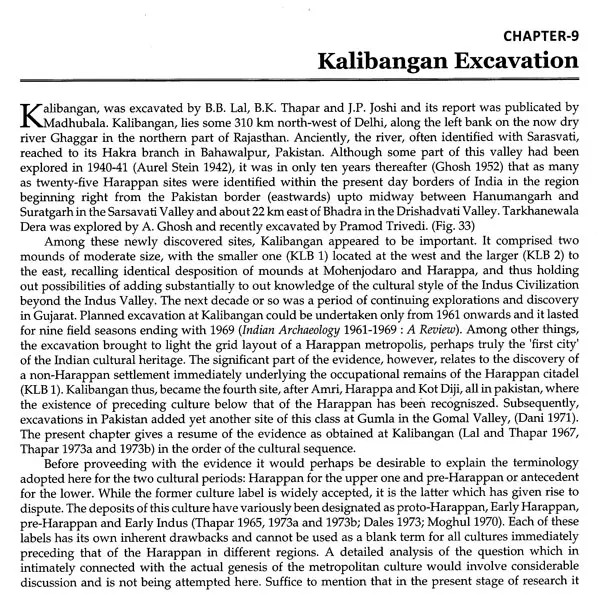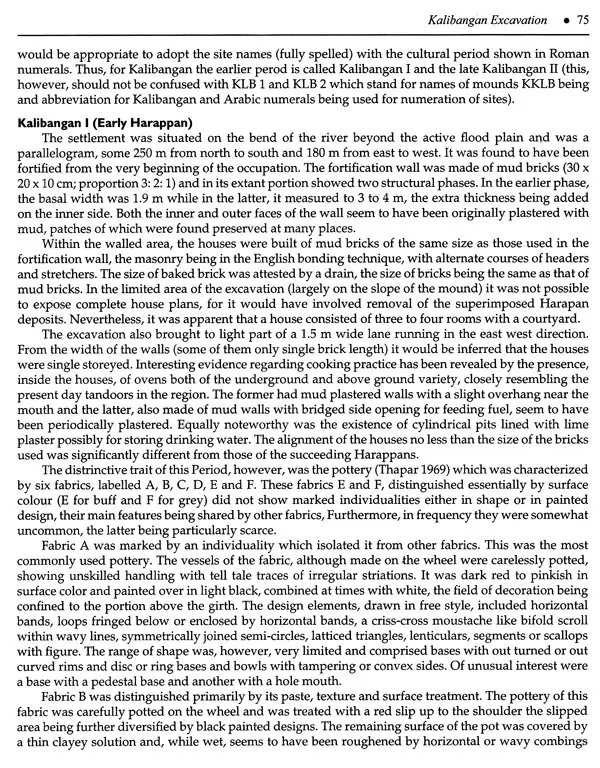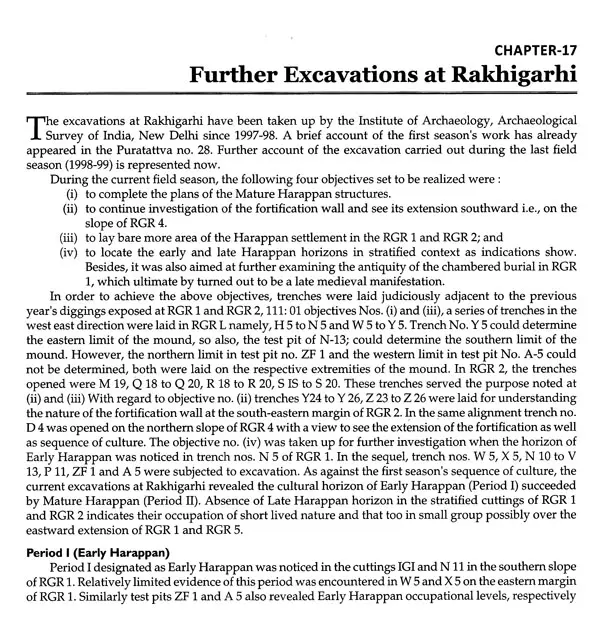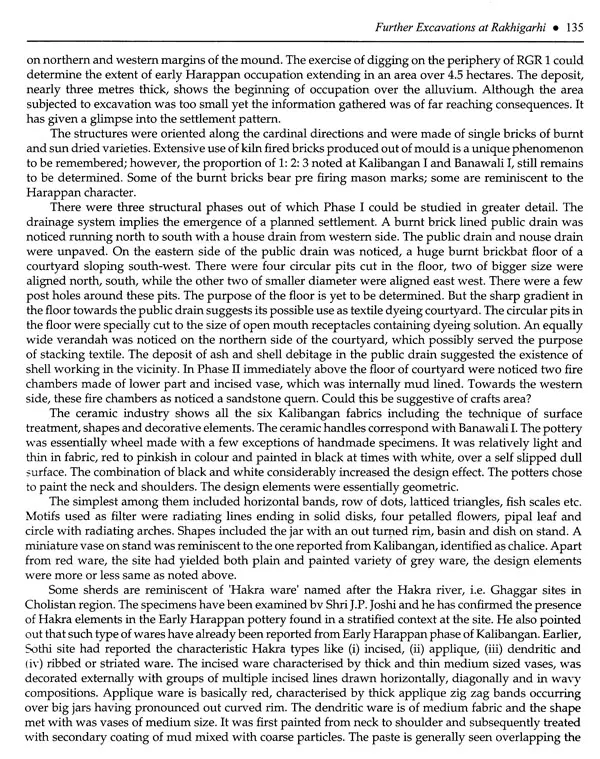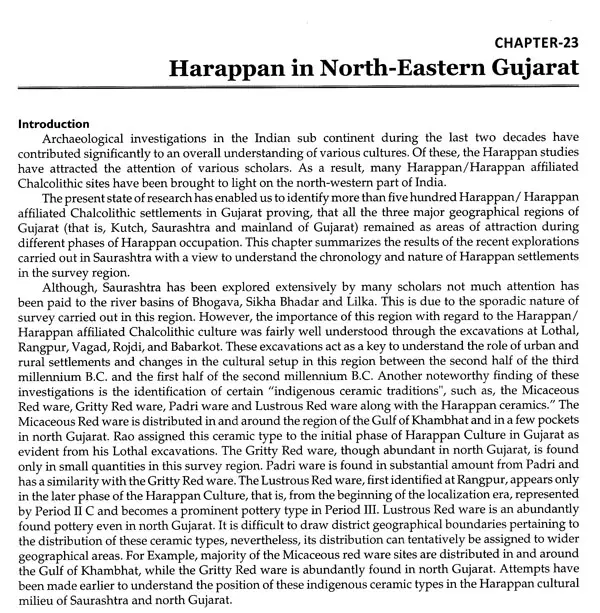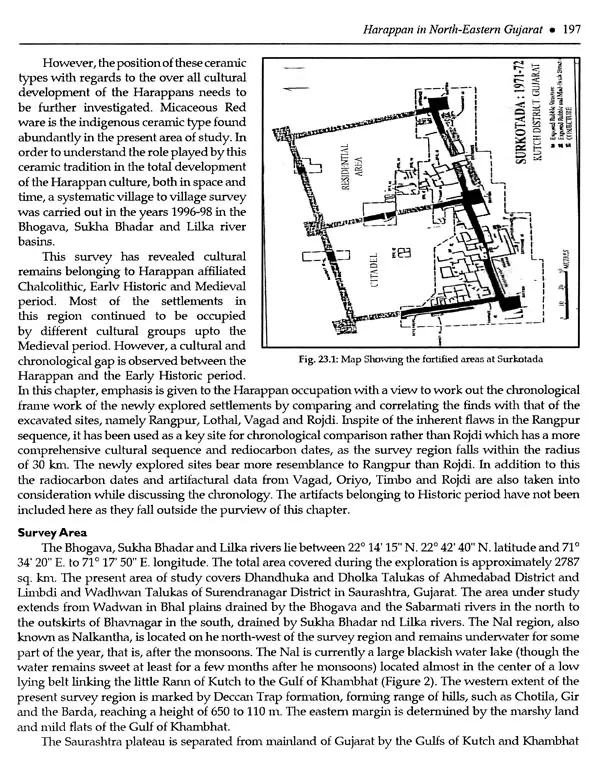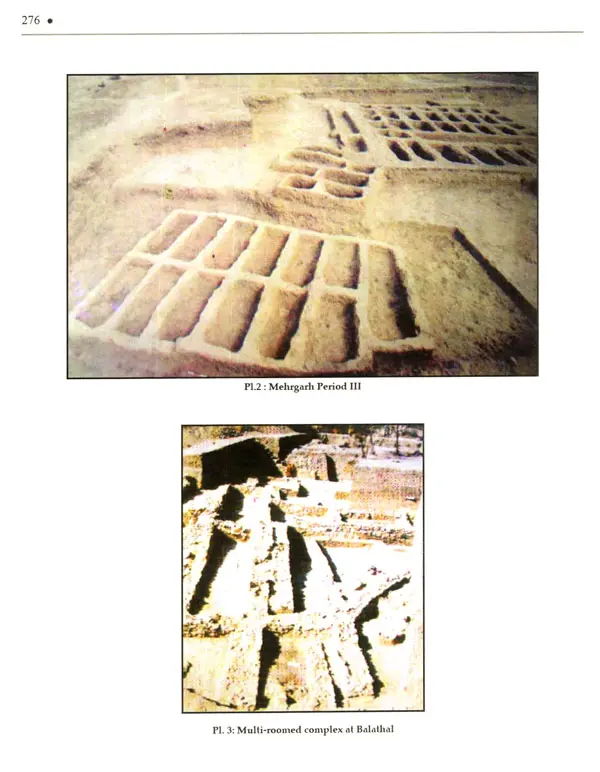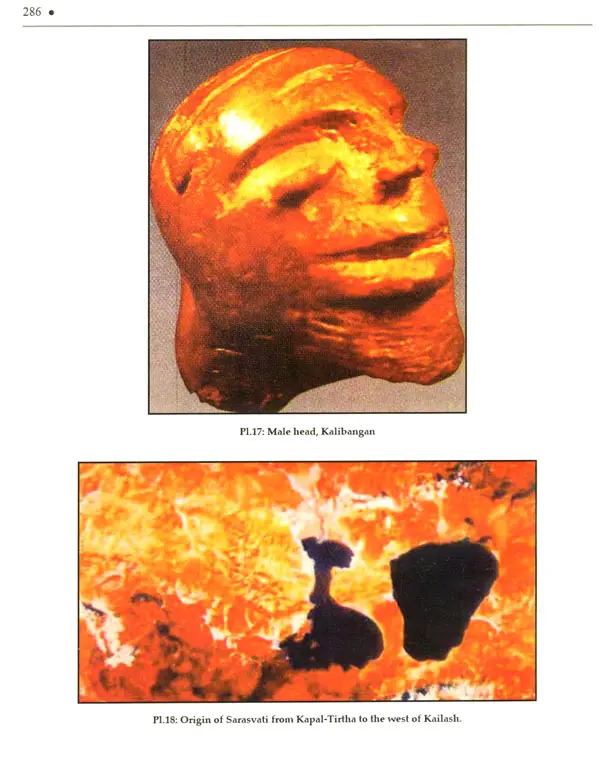
Harappan Architecture
Book Specification
| Item Code: | UAE302 |
| Author: | D. P. Sharma and Kadambini Pandey |
| Publisher: | Shubhi Publications, Gurgaon |
| Language: | English |
| Edition: | 2018 |
| ISBN: | 9788182904590 |
| Pages: | 290 (Throughout Color and B/W Illustrations) |
| Cover: | HARDCOVER |
| Other Details | 11.50 X 9.00 inch |
| Weight | 1.49 kg |
Book Description
During the Circa 2700-2000 B.C. a highly developed civilization known as Harappan civilization, existed along the rivers Indus and Saraswati and Western Uttar Pradesh, all located in north-Western part of South Asia. The area covered 2-6 million-sq. km by this Civilization extended from Sutkagendor, Shahitumb on the Makran coast situated on the border of Iran, Pakistan, Farmana in Haryana, to Alamgirpur and Hulas, Mandi and Shamlinagar, Sanouli, Nahcauli, Bulandi Khera and Toppal (near greater Noida) all on the Hindon river in western Uttar Pradesh, and Shurtaghai (Afghanistan) in the north to Daimabad in Maharastra. On the basis of calibrated radiocarbon dates the age for the Mature Harappan civilization ranges to circa 2700-1900 B.C. The early Harappan or Rigvedic & Yajurvedic first made their settlement around circa 3500-2800 B.C. in Baluchistan. Later on they shifted to Harappa and Mohenjodaro and developed themselves in civilization and they were contemporary of the Atharvedic and Samavedic.
The Harappan houses were built mostly of bricks, wood and stone on high platforms. The pattern of this civilization in certain respects was uniform as is evidenced not only from the seals, sealing, writings, beads, weight and measures, pottery etc. but also from the brick and brick laying technique which are the same. The linear measuring scale has been found at Lothai, Kalibangan, Mohenjodaro and Allandino. Mature Harappan sites like Harappa, Mohenjodaro and Kalibangan had each a citadel on high mound in the west and a fortified chessboard patterned lower town in the east. The Dholavira town planning was having three principal divisions named as Acropolis (citadel), middle town and lower town, which was surrounded by a rectangular massive stone fortification wall. The Great Bath tank at Mohenjodaro shows the state of perfection reached in perfect building techniques. It is 39x23 feet in area and 8 deep. The largest rock cut tanks were discovered from Dholavira.
The most beautiful of all the figurine found at Mohenjodaro are two small figures of a dancing girl in bronze. The famous stone bust of a bearded man, clad in embroidered shawl with trefoil motif, now in the National Museum, Karachi, resembles the image of a priest. Similar type of a headless seated stone priest recently reported from Dholavira. They used gold and silver to make bracelets, necklaces, bangles, earrings, head ornaments and girdles. The Gold Jewellery of Mature Harappan period were reported from Mandi, Mohenjodaro, Nindowari, Allandino, Rakhigarhi, Lothal, Quetta, Dholavira, Sanauli and Harappa.
The claim by S.R. Rao, D.P. Sharma and some other scholars script is proto-Brahmi and Sanskrit language may also be correct. Direction of Harappan writing system was mostly from right to left and later on around circa 2000 B.C. (end of mature Harappans) they started their writing.
The fire worship was a typical characteristic of Mature Harappans. The cult of Siva and Sakti (mother goddess) was an important religion of those people. Animal moveable heads, climbing monkeys, rattles and whistles were used for the amusement of kids. The Harappans were familiar with Yoga. The mature Harappan Burials were of three types (1) extended (2) rectangular pot burial with bones and (3) circular or oval pot burial mostly without bones. The copper /Bronze industry was an important industry of the Mature Harappans. The Harappan were knowing copper casting and hammering technique. A bronze model of two-wheeled carts at Harappa, Chanhudaro, Mohenjodaro and Daimabad have confirmed that Harappans were using these for land transport. The flat-bottomed boats were used for transport in rivers and lakes. The discovery of a Harappan ploughed field from Kalibangan indicates the pattern of ploughing. The terracotta models of a plough from Banawali and Kalibangan suggests the shape of the ploughshare which is not much different from the present one. Around circa 2500-1900 B.C. the mature Harappan were having trade contacts will Mesopotamia and other regions of South Asia.
The late Harappan Chalcolithic stage (Circa 1900-1500 B.C.) shows a stage of deurbanization after the mature phase of Harapans. The Harappan culture ended around circa 1600-1500 B.C. but its impact has been tremendous on later Chalcolithic and Iron age culture. Harappan civilization ended due to Massive flooding, climatic changes and increase of aridity, tectonic movements and decline of trade with West Asia. According to D.P. Sharma, Nayanjot Lahiri the Aryan invasion theory of massacre at Harappan sites does not hold any ground. Shereen Ratnagar concluded that the collapse of the distant trade mechanism and population explosion and over use of land resources set a devolutionary process that brought the decline of Harappan civilization during the first quarter of second millennium B.C.
This book Harappan architecture is joint work of Kadambani Pandey and Dr. D.P. Sharma. There are 28 Chapters in this book in which important are settlement and urban planning of Harappan public space in urban settlement of Harappans, urban settlement at Mohenjodaro, settlement pattern at Allahabdino, Balakot settlement pattern, settlement pattern at Kalibangan, settlement pattern at Banavali, Harappan sites in Punjab, Movement of Harappan's Manda a Harappan site in Jammu, Rakhigarhi a Harappan site, Farmana Harappan settlement in Gujarat, Harappan settlement in Kutch, Lothal a Harappan port town, Kuntasi a Harappan port town. Harappan planning and settlement at Dholavira and Harappan settlement and planning at Hullas. Beside this there are brief descriptions of newly excavated sites like Barror, Bhirrana, Farmana, Jumni Kuran and Sonauli.
Present book is 31 books of Dr. D.P. Sharma which is dedicated to Late Prof. J.P. Joshi, A Harappan Archaeologist & Former Director General, Archaeological Survey of India, New Delhi. Author's are thankful to officials of Archaeological Survey of India, National Museum & Bharat Kala Bhavan Museum, for their various type of help works, Photos published in the book are by the courtesy of Archaeological Survey of India, New Delhi and National Museum, New Delhi. Photography was done by Mr. P. Prakash Rao & Mr. Tejveer Singh. Author are also thankful to Dr. Gurmeet Singh and Nayanjot Lahiri, Dr. Upendra Singh, Dr. R.S. Bist, Dr. S.P. Gupta Dr. K.N. Dixit, Mr. Sanjee Singh for various type of Academic help. Typing of this book was done by Mr. Raju Gharat, Mr. Ajeet kumar Choudhary, Mr. Bahadur Kumar Kannaujiya and Devangana did various type of help in'compilation of this book.
**Contents and Sample Pages**
